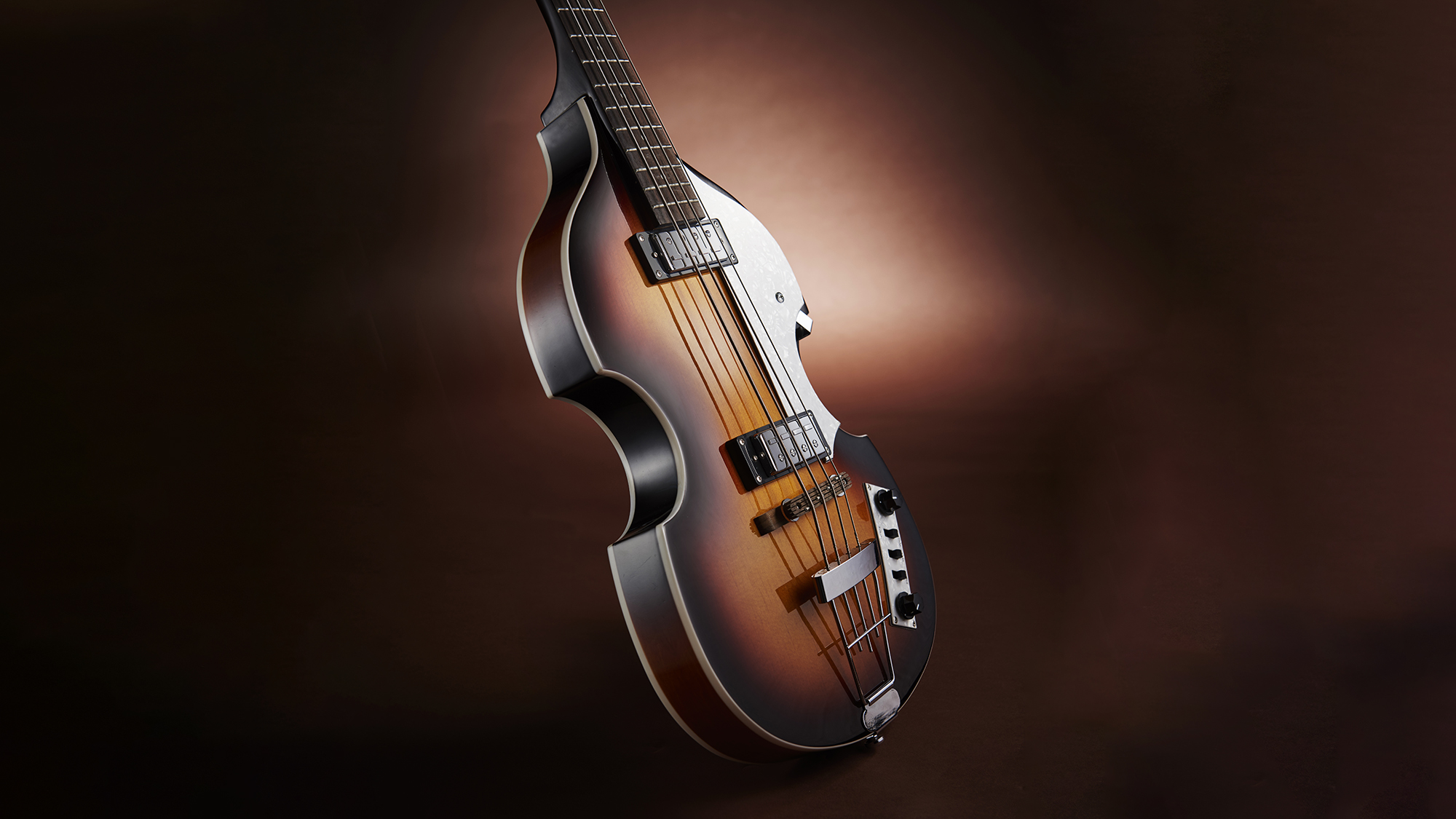How to play bass guitar for beginners: start playing today
From basic finger techniques to slap bass, here’s what you need to get started on your bass guitar journey
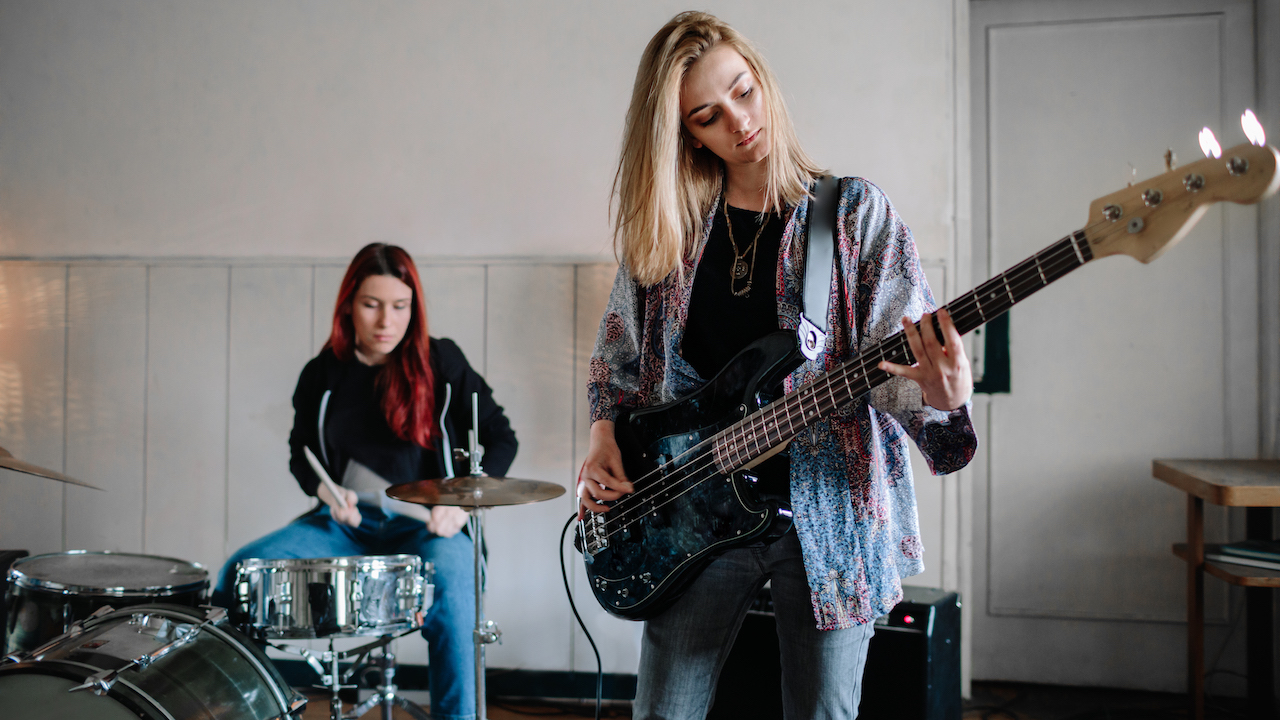
Most people assume learning how to play bass guitar is simple: four strings and a pickup. We agree. Within minutes of holding a bass for the first time, you'll be able to play a couple of notes.
But while the bass can offer an 'easier' route into a band by virtue of essentially single-note accompaniment, remember that the other instruments revolve around your most central contribution. So, if the bass looks like an easy instrument to play, it's never an easy instrument to master.
The first thing to get to know about the bass is where to find all the notes, and to begin to recognize the all-important patterns that are formed on the neck.
It's also important to get a couple of basic techniques under your fingers, otherwise you're going to waste a lot of time having to rectify bad habits later.
We’ve compiled some of the basics of how to play bass guitar for you to explore right here (and if you haven't already got yourself a beginner bass guitar at this stage, we can point you in the right direction).
How many strings does a bass guitar have?
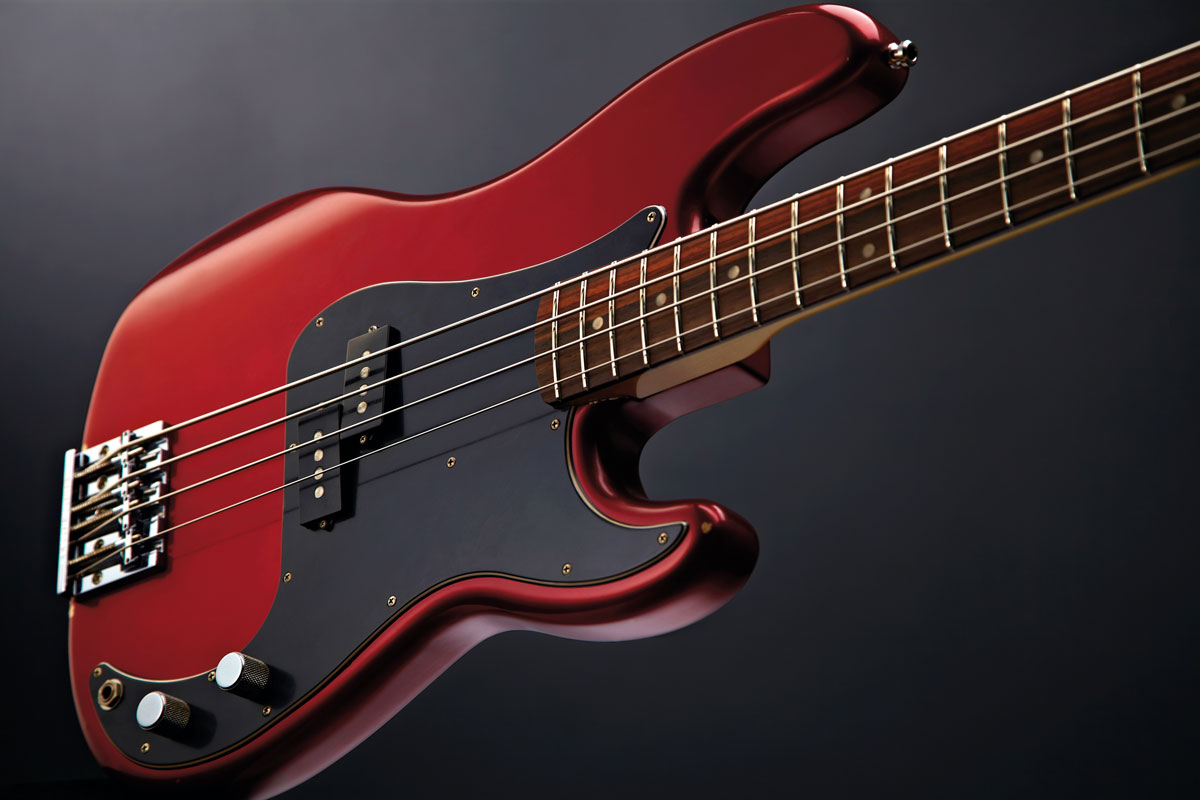
A bass guitar typically has four strings, tuned (low to high) E A D G. These strings are tuned a full octave lower than the bottom four strings of an electric guitar – so if you play a low E string on a bass and guitar at the same time, they will sound in tune with each other.
Four-string basses remain the most popular instruments, especially for beginners. But five-string basses, which add a low B string below the E, are increasingly common, especially among contemporary R&B styles. Some virtuoso bassists, such as Thundercat, even stretch out to six strings.
All the latest guitar news, interviews, lessons, reviews, deals and more, direct to your inbox!
But we'd recommend any beginner bassist starts with four strings. While that's two fewer than a guitar, that doesn't mean bass guitar is any easier to master – there's a whole different set of styles and technique to learn. Starting with…
Pick or fingers?
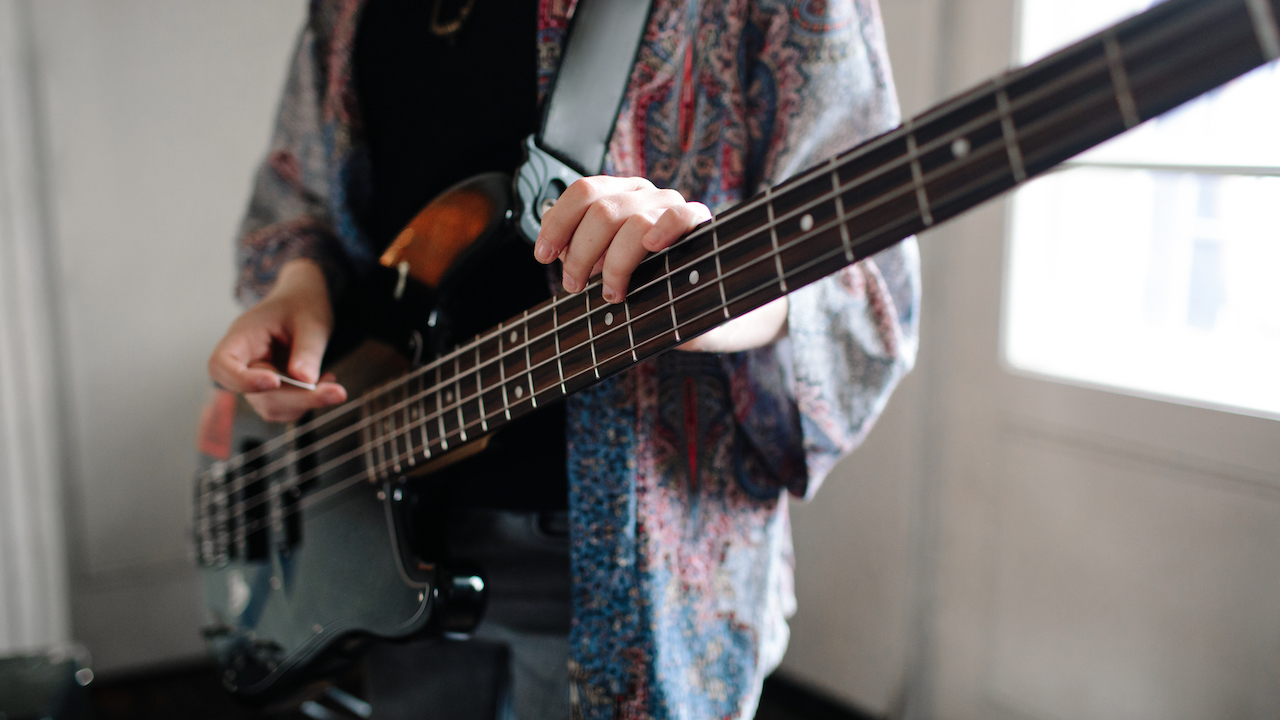
One of the first decisions any beginning bass player has to make is whether to pluck the strings with the fingers (usually the index and middle fingers), or to use a guitar pick.
There are no hard and fast rules about this, though bassists who play hard rock/metal usually opt for a plectrum style in order to facilitate the rapid 16th-note basslines occasionally found in those songs. A note played with a pick generally sounds 'cleaner' in fast-played sections, and a deeper sound can also be used because of this increased note definition.
Fingerstyle players normally have a smoother-toned, mellower sound. Often, the main difficulty with this technique is developing consistency between the two different plucking fingers – this will take considerable effort and practice to achieve, but it's well worth it.
Try both and see which feels more comfortable. It may be best to persevere with both styles for a while, until one or other starts to feel more natural.

The fingerstyle technique should look as if your fingers are walking on the string. Make sure that on each string the right hand plays; first finger, second finger, first finger, second finger, etc. Don't be tempted to use only the first finger.
If you wish to use a pick, try using alternate pick strokes. Move the hand from the wrist for these up/down plectrum strokes, not the whole forearm.
The other vitally important technique to learn at this stage is to think in terms of what is called 'guitar fingering', ie, using 'one finger per fret'. Practice the following tab example to get a real feel for combining the two elements of right- and left-hand playing. Give both pick and fingers some time at the moment – both will be invaluable in the near-future.
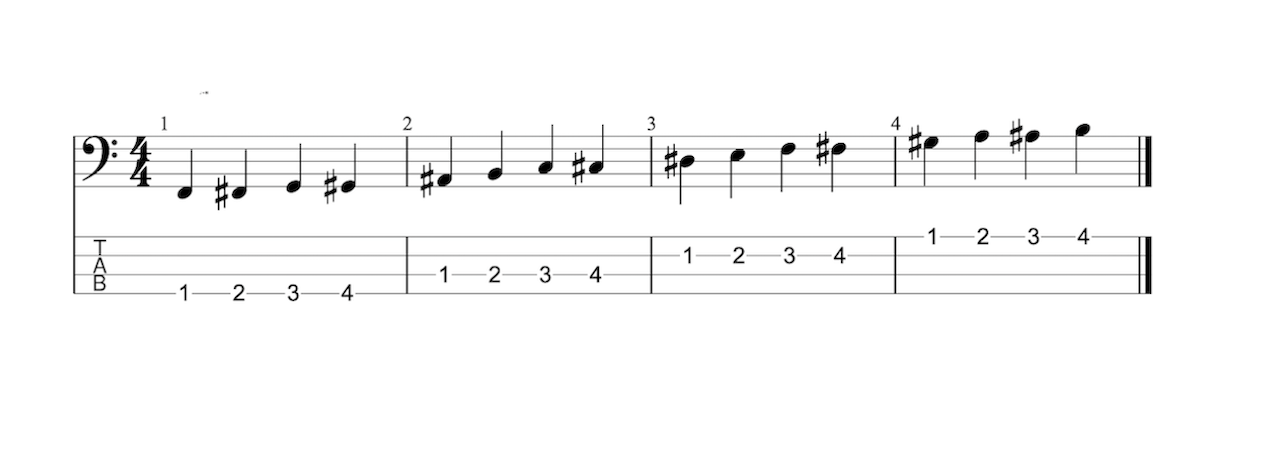
Now we'll let you into a secret that can take some players years to discover. The great Billy Sheehan is famed for his ability to play very high-speed licks on a bass, but maintains that, though it looks difficult, the actual theory is not so.
“I remember when Space Invaders and games like that first came out,” Sheehan told Bass Player. “I couldn't get anywhere near the huge scores some of the kids were racking up. I'd just shoot away at anything until I watched some of these high-score heroes in action, and the penny dropped! They were playing in patterns, and could anticipate the movements of the targets at any given time.
“That was it: I applied that system to my bass playing using pattern boxes, or chord shapes, which I got to know really well, and could move about the fretboard. I probably use about three patterns to get the high-speed effects.”
Such patterns allow you to confidently play a sequence of varied notes behind a specific chord using, as Sheehan rightly states, a moveable shape. These patterns can be complex. but at this stage they can simply be the individual notes of a major chord played in arpeggio form, ie, one after the other.
Let's try out just this kind of pattern, as might be applied to some chords that a guitarist would ask you to play in a band situation.
Check the following chord progression:

This chord progression forms the basis for such tunes as Wild Thing by The Troggs or Grease's Summer Loving, or the chorus of The Beatles' Lucy in The Sky With Diamonds. Basically, this style of chord diagram is telling you to play four beats of G, four beats of C and so on. When you reach the end of the sequence, start again from the top.
To begin with, you could only play the root notes to accompany such a chord progression, but after a while, this is going to get boring, and so it's important to know which other notes go to make up, in this particular case, a major chord.
Now let's use a (moveable) pattern of notes, which go to make up the G, C and D chords, and in this instance would be major arpeggios.

Now set a click track to tick away at a nice easy speed, say, 60 beats per minute, and play each of the major arpeggios in order of the chord progression. This will get you into the system of the moveable chord shape, and don't forget, though we've used only three specific chords, the major arpeggios can be used for any major chord. If the chord was A major, you could now play an A major arpeggio.
Once you’re familiar with the idea, try experimenting with different chords and arpeggios to see what you can discover.
How to play slap bass
The intricacies and techniques of slapping the bass have been written about many times over.
Basically, the idea is to punctuate basslines with additional percussive sounds – the 'slap' referred to in the name is primarily performed in a 'thump and pluck' style, where the thumb 'thumps' the low strings, A and E, striking them against the fretboard, while the little finger usually hooks itself under the G string and plucks the string, allowing it to then snap against the fretboard – no note is really made, just a resonant and heavily-muted representation of the string's note.
To play 'dead notes', hold the fingers of the fretting hand together and place them flat over the strings with the 4th finger at the 7th fret, taking care not to push down too far on the strings.
Bring the side of the thumb of the picking hand down on to the last fret of the E string – this should give quite a magnificent 'thump'. Leave the fretting hand exactly where it is and repeat the process for the A string.
In order to give an approximation of the octave sound with dead notes, thump and pluck between the E and D strings, and then the A and G strings. After the thumb has hit the E string, as the wrist rotates to lift the thumb from the string, the first finger should scoop under the D string to 'pluck' it.
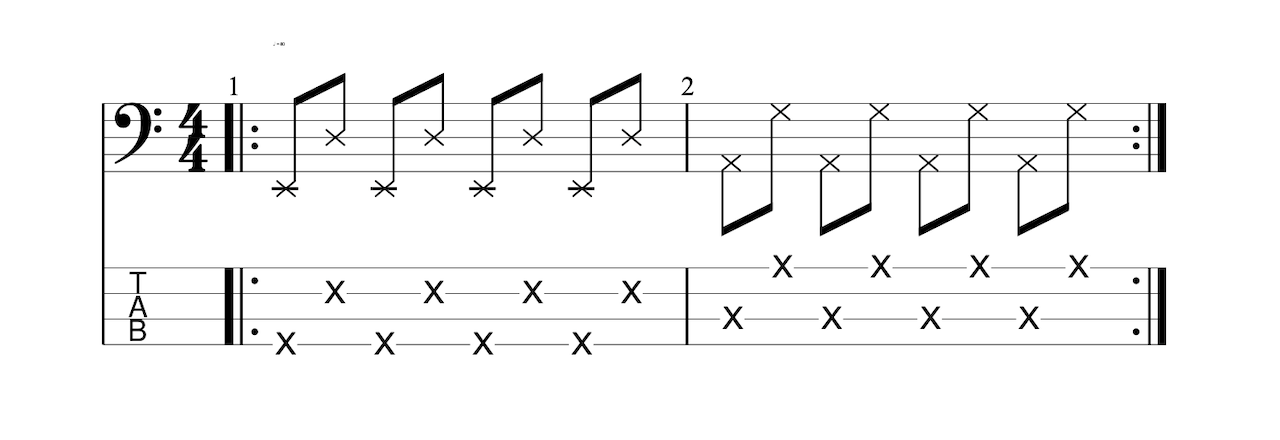
Now repeat the pattern with stopped notes on F# and B. Make the upper octaves short.

The next example shows a hammer-on exercise based on E minor and A minor pentatonic scales. Hammer-ons let you tie notes together smoothly, with no silence between them.
Hold a note down on the fifth fret. Slap the string, and then tap down sharply on the same string two frets up from the first fretted note. The hammer-on directly follows the first thumb-hit.
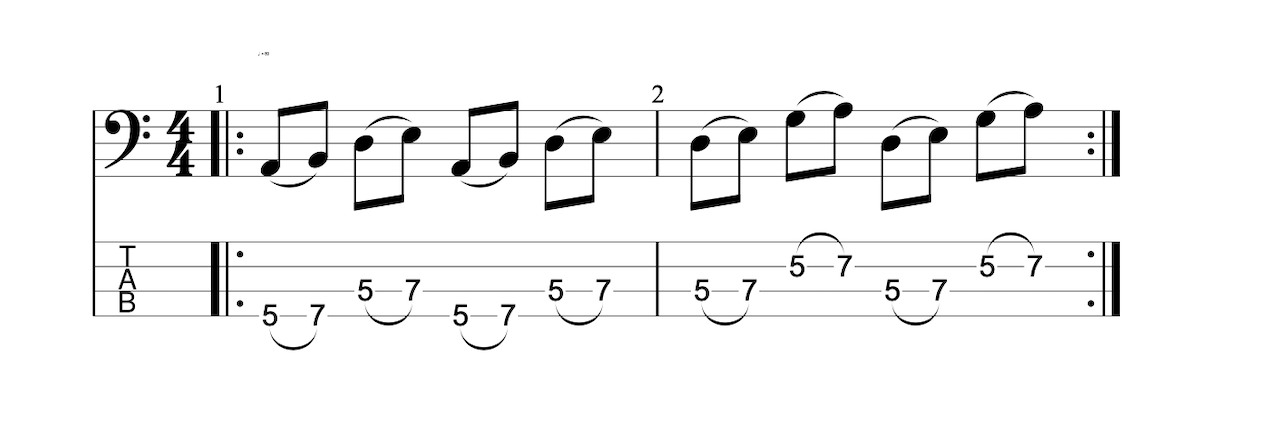
Our final example combines a hammered b7 root with an octave root 7 pull-off in a simple riff.
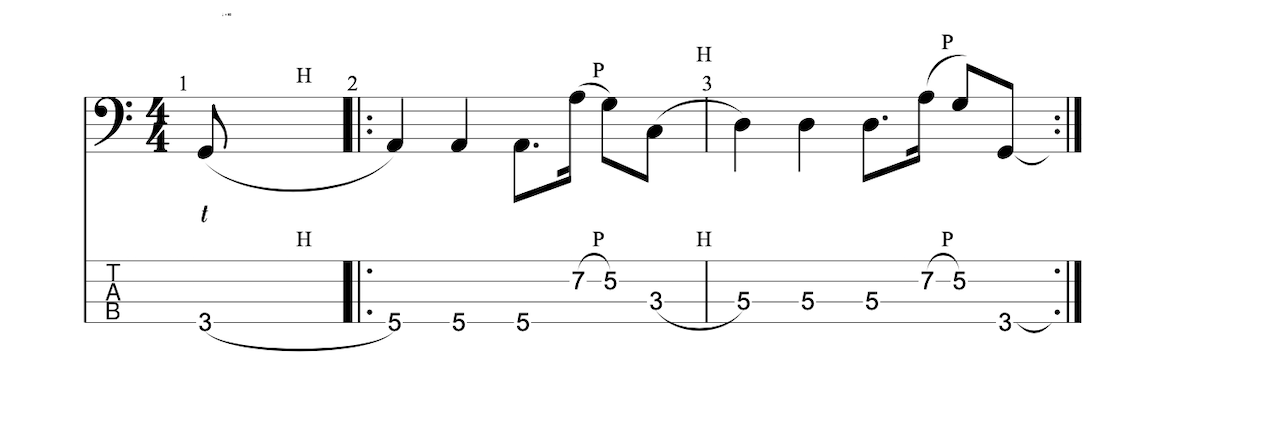
For those wishing to study the history of slap bass playing, take a listen to Larry Graham on Hair, which is one of the finest examples of slap-funk bass playing.

Nick Wells was the Editor of Bass Guitar magazine from 2009 to 2011, before making strides into the world of Artist Relations with Sheldon Dingwall and Dingwall Guitars. He's also the producer of bass-centric documentaries, Walking the Changes and Beneath the Bassline, as well as Production Manager and Artist Liaison for ScottsBassLessons. In his free time, you'll find him jumping around his bedroom to Kool & The Gang while hammering the life out of his P-Bass.
